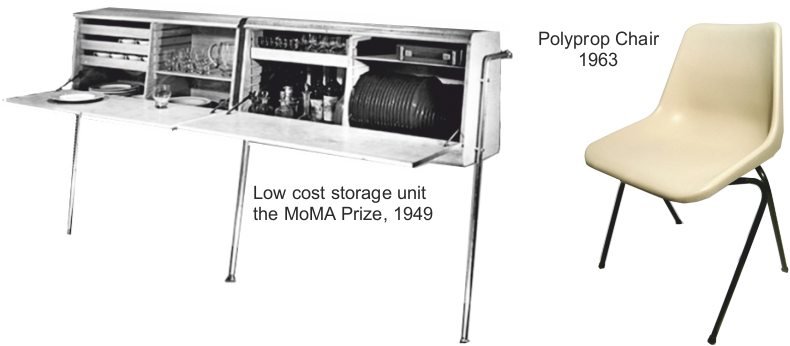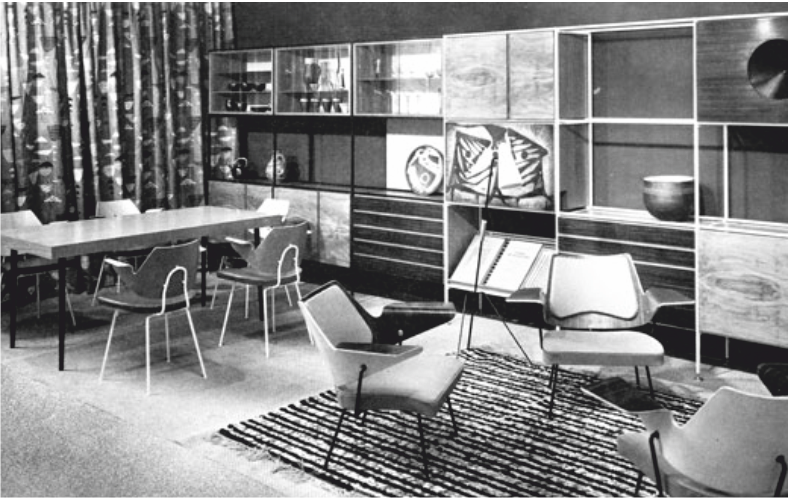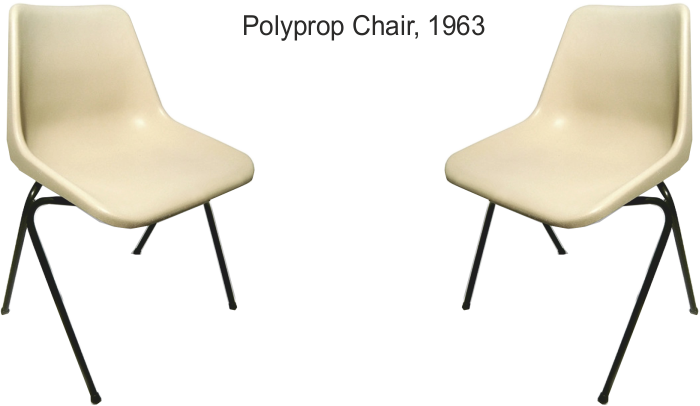It can easily be argued that Robin Day is Britain’s most famous designer. He is often referred to as one of the world’s first ‘eco’ designers, as his designs required minimal materials, to produce stylish and yet functional furniture. He aimed to design products that were affordable to ordinary people. They were different and distinctive, using modern materials and manufacturing technology. He was innovative, often designing products that were in contrast with the ‘traditional’ approach to design.
Robin Day was an award winning designer. He won first prize for his plywood storage unit, at the 1949 Low Cost Furniture Competition, organised by the Museum of Modern Art in New York (the MoMA Prize). His designs were acclaimed at the Festival of Britain in 1951 and he won the Gold Medal at the Milan Triennale, for the pavilion he designed. Robin Day was an international success, with his designs selling across the world.
He employed new industrial production techniques. This included his ‘avant-garde’ use of plywood, which had seen research and development during the Second World War. He also used injection moulding, in his Polyprop Chair.
Robin Day initiated trends in design, from his innovative use of plywood, to his use of polypropylene in the Polyprop Chair.



The Polyprop Chair set a bench mark for others to follow.
It was a ground breaking design, in terms of manufacturing techniques, in particular the use of injection moulding, for the manufacture of the combined seat and back.
Arguably it improved past designs for cheap stackable chairs. It was cheaper and lighter than any of its predecessors.
The chair set new standards. Older plywood stackable chairs were expensive and heavy.
The Polyprop Chair has stood the test of time, remaining popular despite the passing of years, with over ten million sold worldwide.
A design that stays in the memory of those who see/use it. People remember this design, as it is common around the world, used in schools, colleges and many more.
It is recognised immediately by consumers, as the ultimate cheap, stackable chair.
It has inspired other designers to produce similar designs. The Monobloc Plastic Chair by Joe Colombo was produced in 1965. Would this have been designed, if it were not for the Polyprop Chair?
It set a trend in cheap, functional, stackable chairs. A range of cheap ‘plastic’ chairs followed the manufacture of the Polyprop Chair.
It is undoubtedly an innovative design.
It is aesthetically pleasing, although this is debatable.
The chair has been emulated/copied by other designers.
This design has its place in the history of furniture design.